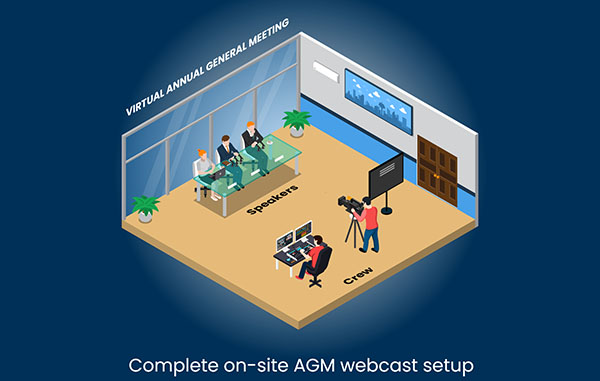5 Important Points for a smooth webcast
Webcasts play a crucial role in today’s world in many industries. There are countless targeted webcasts for countless topics. Townhall, AGM, Medical Conference, Award Ceremony, Wedding Ceremony, Product Launch, and many more events are turning into virtual broadcasts or webcasts. There are so many crucial points to take note of if you are planning a webcast but we would like to highlight the 5 points that we think are the most important of all.
1. Planning Ahead of the webcast
It is very important to plan your webcast weeks or months prior so that you don’t need to rush things. We understand that you would like to have a perfectly executed webcast, so having to rush things like registration page setup, custom branding, creating digital artworks will not always work well. These steps take time so do plan ahead of time.
2. Fix a date to finalize everything
We do understand that changes have to be done, and adjustments have to be made along the way before the actual webcast starts. It is very important to have a date by which everything must be settled, and no more changes are to be made. Last-minute changes can sometimes come with unexpected side-effects that are often overlooked because of the rush. Our friendly team members always try to entertain last-minute requests but it is best for all parties that changes are finalized a few days or weeks prior to the webcast.
3. Practice and Rehearsal
It is a very crucial step. Either it is a virtual setup or an on-site setup with equipment, practice and rehearsal sessions are always helpful. If that’s a virtual setup, presenters need to connect for a practice session to familiarize themselves with the interfaces, while our technical teams can also assess the presenters’ internet connection and device performance. If you are hosting a very interactive webinar for a group of attendees, you might even need to have a practice session with the attendees as well to ensure all attendees are comfortable with the interface and platform that is used for the webinar. On-site events are more about technical recce and presenters may not need to involve most of the time, do request your virtual event organizers to perform a site recce well before the webcast. Our technical team members at Connect Vision will always perform a site recce for an on-site setup.
4. Prepare for Interactivities
A webcast will often have interactivities and the most common interactivity for most webcasts is Q&A (Text or Voice). If it is a text Q&A, check if the particular platform that you are using has any question screening feature and assign the screening task to an appropriate team member. Do prepare a few questions to warm up the Q&A session in case everyone is too afraid to ask the first question. If you are allowing the Voice questions, make sure that there is a team member handling the muting, unmuting accordingly. Seek any technical advice from the technical team if you have any doubt on any technical matter.
5. Moderating the live webcast
Either you are hosting a 1-hour webinar, or a full day webcast, it will be a good idea to have a moderator who knows the topic well, and able to engage the attendees throughout the webcast. The moderator will also keep track of the time for the presenters and direct the Q&A discussion accordingly. Seek advice from the technical team and announce any required technical DOs and DON’Ts through the moderator at the start, throughout and at the end of the webcast.
Of course there are many other points to take note of, but above points are those we think are the most important points extracted from our many years of experience in virtual event industry. Please also check out our webinar and webcast services here.



